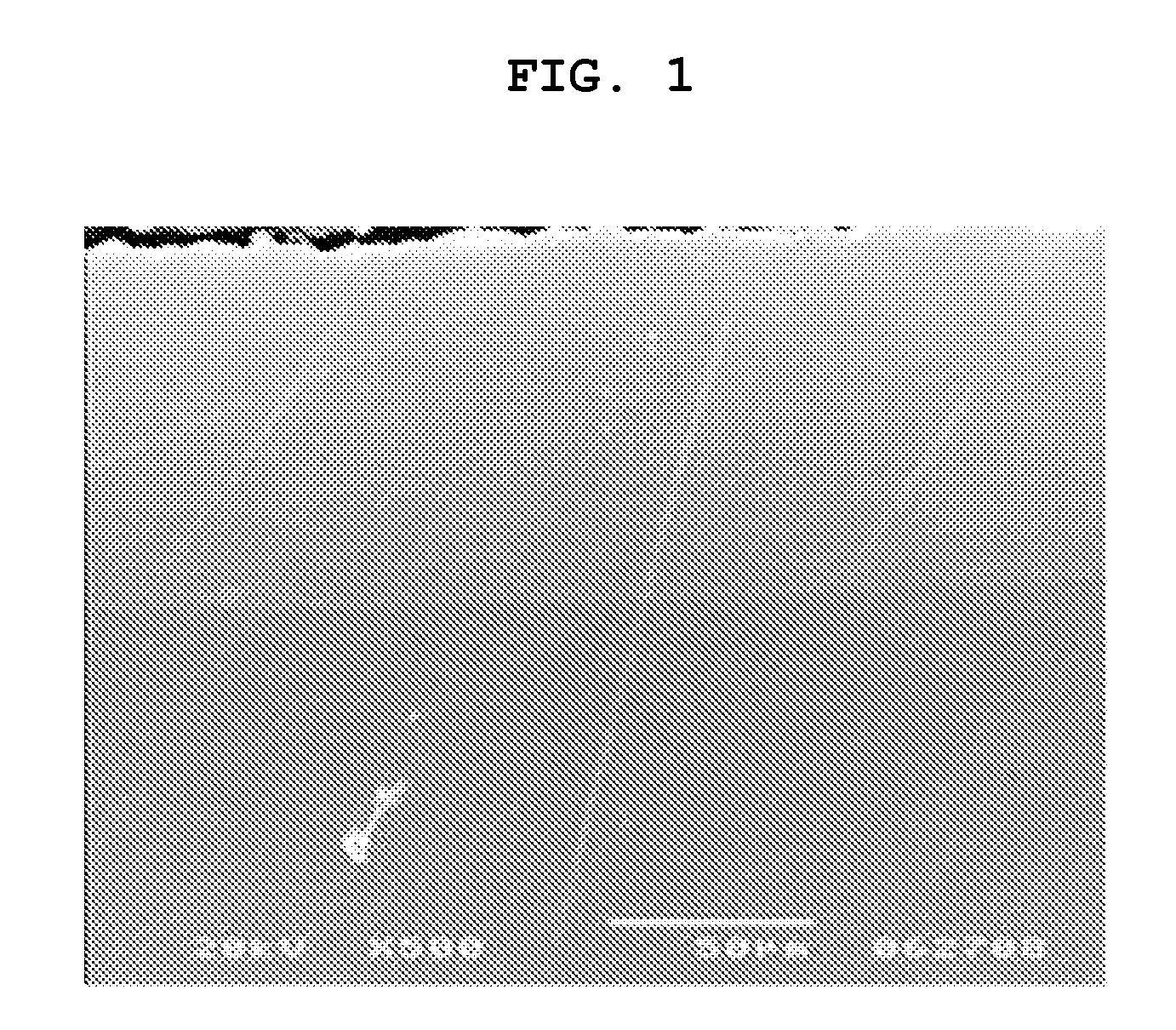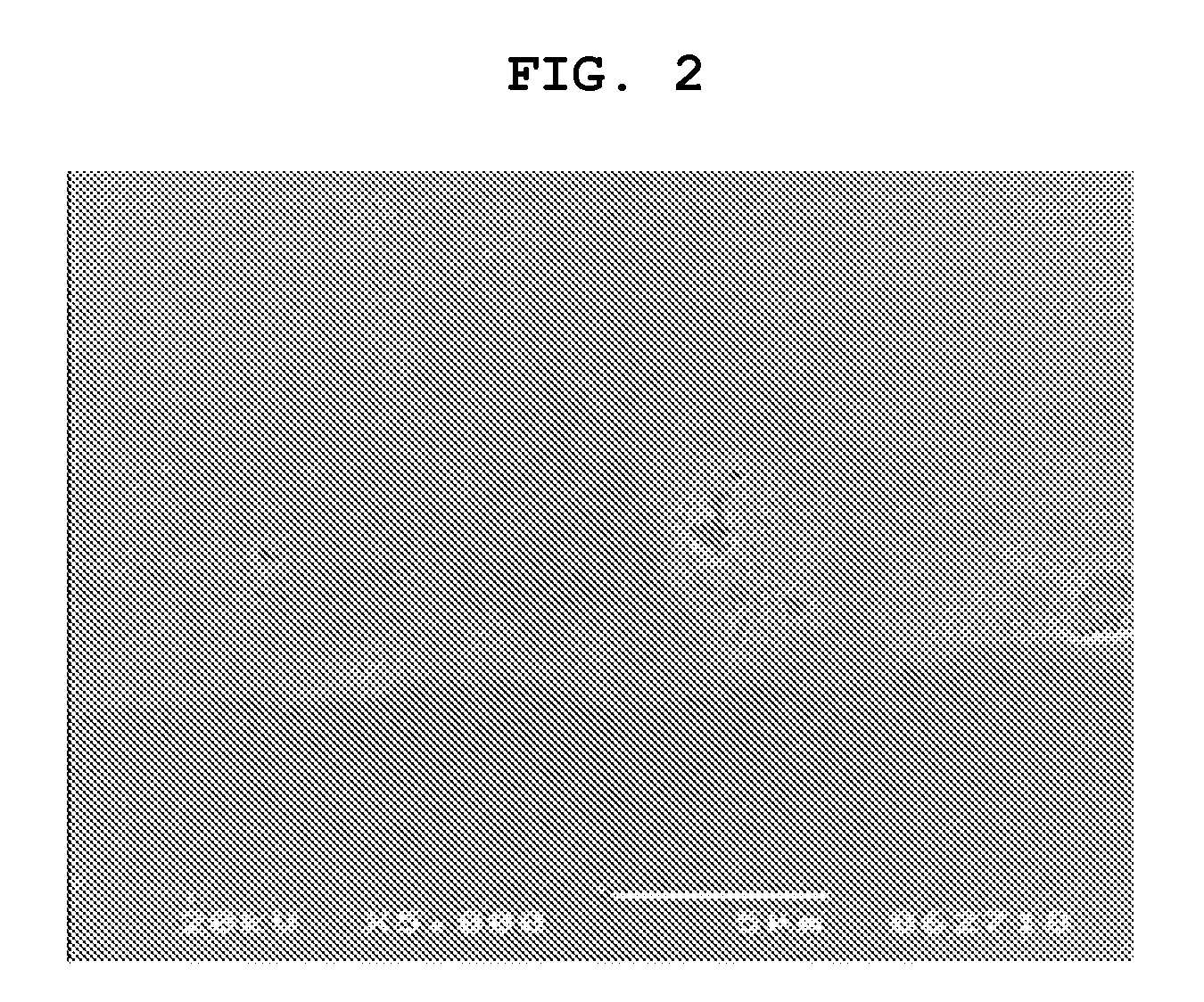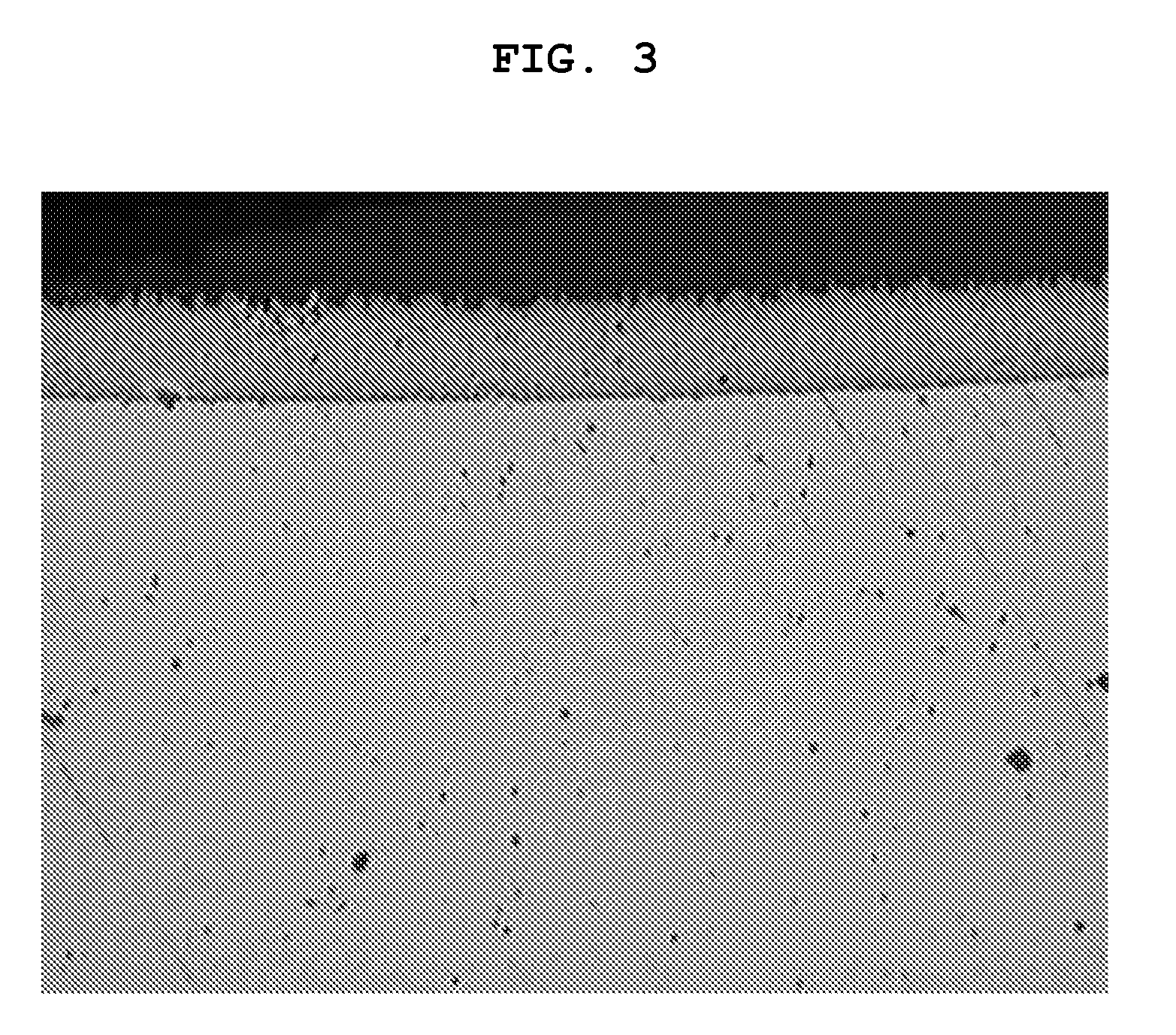Method of preventing corrosion degradation using ni or ni-alloy plating
a technology of nialloy and corrosion degradation, which is applied in the direction of liquid/solution decomposition chemical coating, corrosion diminishing boiler components, lighting and heating apparatus, etc., can solve the problems of heat transfer tube degradation, heat transfer tube thickness reduction, etc., to prevent various corrosion degradation, prevent degradation, and prevent corrosion degradation
- Summary
- Abstract
- Description
- Claims
- Application Information
AI Technical Summary
Benefits of technology
Problems solved by technology
Method used
Image
Examples
example 1
Manufacture of Nickel-Plated Heat Transfer Tube of Steam Generator
[0037]A nickel strike layer having a thickness of about 5 μm was formed on the inner and outer surfaces of Alloy 600, which is a commercial heat transfer tube material and comprises 0.025 wt % of carbon (C), 0.05 wt % of silicon (Si), 0.22 wt % of manganese (Mn), 0.07 wt % of phosphorus (P), 15.67 wt % of chromium (Cr), 75.21 wt % of nickel (Ni), 8.24 wt % of iron (Fe), 0.005 wt % of cobalt (Co), 0.39 wt % of titanium (Ti), 0.011 wt % of copper (Cu), 0.15 wt % of aluminum (Al), 0.0014 wt % of boron (B), 0.001 wt % of sulfur (S) and 0.0103 wt % of nitrogen (N), by electroplating in a nickel strike solution thereon to increase the adhesion force between a matrix and a plated layer, and then a nickel plated layer having a thickness of about 50˜80 μm was formed on the nickel strike layer to manufacture a heat transfer tube, the inner and outer surfaces of which is plated with nickel.
experimental example 1
Analysis of Surface of Nickel-Plated Layer after Expanding Heat Transfer Tube
[0038]Specimens of the nickel-plated heat transfer tube manufactured in Example 1 were expanded at pressures of 32,000 and 35,000 psi using a hydraulic expansion method similar to a process of expanding a heat transfer tube used during the initial manufacturing of a commercial steam generator at a steam generator manufacturing company. As the tubesheet material used at the time of expanding the nickel-plated heat transfer tube, carbon steel SA 508, which is similar to the material used to manufacture a steam generator in a nuclear power plant, was used. The average expansion rates of the nickel-plated heat transfer tube at pressures of 32,000 and 35,000 psi were 1.23% and 1.67%, respectively.
[0039]After the expansion of the nickel-plated heat transfer tube, its section was observed using a scanning electron microscope, and the results thereof are shown in FIGS. 1 and 2.
[0040]FIG. 1 shows a section of the ni...
experimental example 2
Stress Corrosion Cracking Test
[0042]The following test was conducted in order to evaluate corrosion resistance to stress corrosion cracking of the heat transfer tube having inner and outer surfaces plated with nickel according to the present invention.
[0043]The heat transfer tube expanded in Experimental Example 1 was cut into a C-ring specimen. The C-ring specimen was screwed with a bolt to apply tensile stress onto the outer surface thereof, and was spread out with a bolt to apply tensile stress onto the inner surface thereof. The tensile stress was applied onto the C-ring specimen through a process disclosed in the thesis ASTM G38 [ASTM G3, “Practice for making and using C-ring stress corrosion test specimens”, 2002] such that the tensile stress applied to the maximum stress region at the apexes of the inner and outer surfaces thereof was 150% of the yield stress of Alloy 600. Subsequently, the stress corrosion cracking test of the C-ring specimen was conducted using a nickel-mad...
PUM
| Property | Measurement | Unit |
|---|---|---|
| Thickness | aaaaa | aaaaa |
| Corrosion properties | aaaaa | aaaaa |
| Degradation properties | aaaaa | aaaaa |
Abstract
Description
Claims
Application Information
 Login to View More
Login to View More - R&D
- Intellectual Property
- Life Sciences
- Materials
- Tech Scout
- Unparalleled Data Quality
- Higher Quality Content
- 60% Fewer Hallucinations
Browse by: Latest US Patents, China's latest patents, Technical Efficacy Thesaurus, Application Domain, Technology Topic, Popular Technical Reports.
© 2025 PatSnap. All rights reserved.Legal|Privacy policy|Modern Slavery Act Transparency Statement|Sitemap|About US| Contact US: help@patsnap.com



